If you’re lactose intolerant, choosing the right protein can be tricky.
Many people struggle with digestive issues after consuming whey protein.
In this blog, we’ll clear up the confusion, break down the lactose content in different whey protein types, and guide you to the best options for your needs.
Key Takeaways:
- Whey Protein and Lactose Content: Whey protein contains varying amounts of lactose, with whey protein concentrate having the highest lactose content. Whey protein isolate has minimal lactose, and hydrolyzed whey protein contains even less.
- Lactose Intolerance and Whey Protein: People with lactose intolerance can typically tolerate whey protein isolate and hydrolyzed whey protein because they contain very low amounts of lactose, making them suitable for those sensitive to lactose.
- How to Minimize Lactose Intake: To minimize lactose while using whey protein, opt for whey protein isolate or hydrolyzed whey protein. Additionally, lactase enzyme supplements can help break down lactose in whey protein concentrate.
What is Whey Protein and How Is It Made?

Whey Protein Explained
Whey protein is a top-notch protein derived from milk during the cheese-making process. It’s quickly absorbed by your body, making it a great choice for muscle recovery.
Types of Whey Protein
Whey Protein Concentrate (WPC)
- Protein: 70-80%
- Lactose & Fat: Higher content might cause bloating for those with lactose sensitivity.
- Ideal for: Budget-friendly option, non-lactose-sensitive people.
Whey Protein Isolate (WPI)
- Protein: 90%+
- Lactose & Fat: Very low, easier on the stomach.
- Ideal for: Lactose-sensitive individuals, those needing high protein with low fat.
Hydrolyzed Whey Protein (WPH)
- Protein: 90%+
- Lactose & Fat: Nearly gone, easier digestion.
- Ideal for: Those with sensitive stomachs or post-workout recovery.
Why Isolate Works Better for Some
Quick Fact: Isolate is processed to remove most lactose and fat, making it easier to digest than concentrate. Perfect for anyone looking to avoid bloating or stomach discomfort.
User Experience
One Reddit user shared, “I switched to whey isolate and it’s way gentler on my stomach compared to concentrate.”
What Is Lactose?
Lactose is a natural sugar found in milk and dairy products. It’s made up of two simple sugars: glucose and galactose. When you drink milk or eat dairy, your body needs to break down this sugar into its simpler forms for digestion.
However, not everyone’s body can handle lactose. Some people lack the enzyme lactase, which is needed to break lactose down properly. This leads to digestive issues for those who are lactose intolerant.
How Lactose Intolerance Affects the Body
Lactose intolerance happens when your body doesn’t have enough lactase. As a result, undigested lactose sits in your gut and can cause:
- Bloating: A feeling of fullness or puffiness in the stomach.
- Diarrhea: Loose or watery stools that can cause discomfort.
- Cramps: Stomach aches that feel like sharp pains or discomfort.
These symptoms usually appear 30 minutes to 2 hours after consuming dairy. It can be uncomfortable for some.
Quick Fact
Lactose intolerance affects about 65% of the global population. That means a lot of people struggle with digesting dairy, especially as they age.
User Insight
One Quora user shared: “I didn’t realize how much dairy I was consuming until I switched to lactose-free protein. No more bloating!” This is a common experience among people who are lactose intolerant and make the switch to lactose-free alternatives.
Does Whey Protein Contain Lactose?
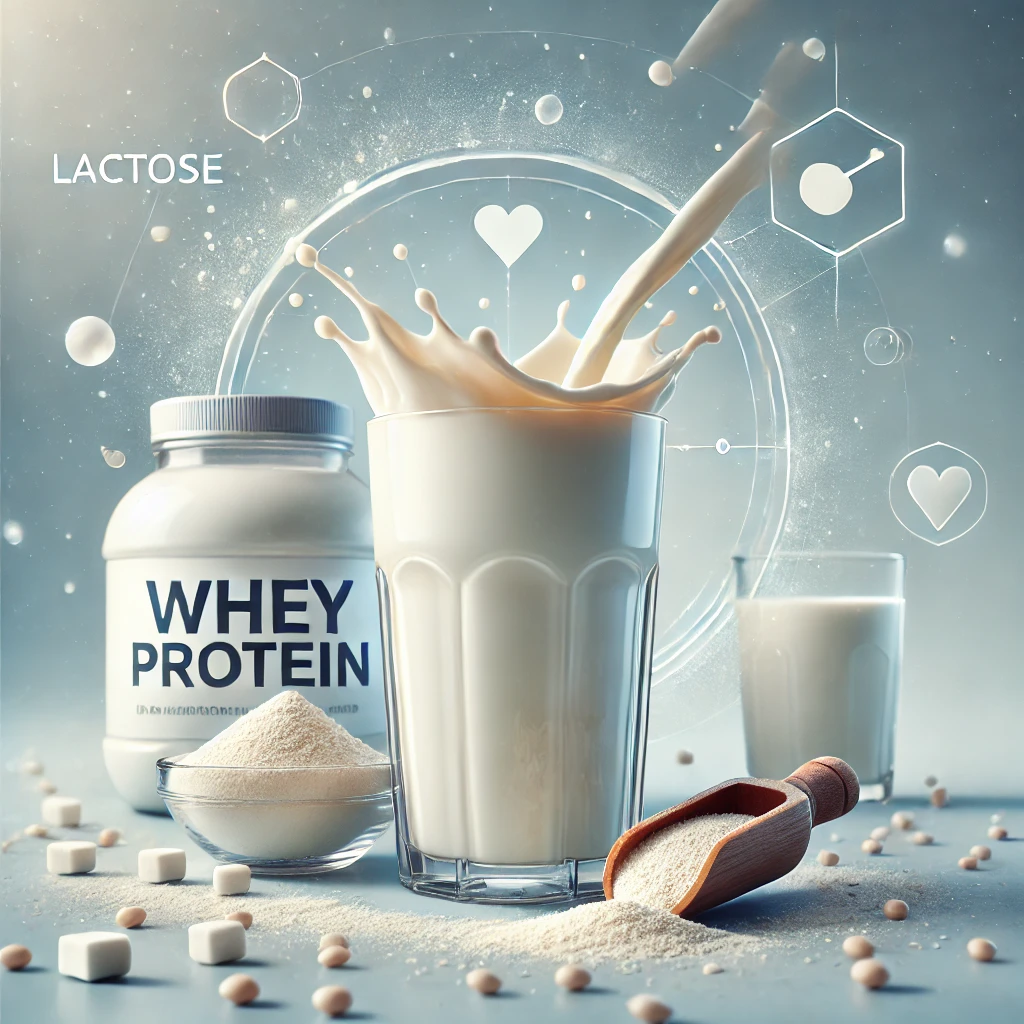
The Lactose Content in Different Types of Whey Protein
Whey Protein Concentrate (WPC)
- Lactose Content: Contains the most lactose of all types.
- Protein: Typically 70-80% protein by weight.
- Other Ingredients: The remaining content is made up of fats and carbs, including lactose.
- Example: If you have lactose intolerance, you might feel bloated or experience digestive discomfort after taking WPC.
- Best For: People who aren’t lactose-sensitive or looking for a budget-friendly option.
Whey Protein Isolate (WPI)
- Lactose Content: Lower in lactose, usually less than 1%.
- Protein: About 90% protein by weight.
- Digestibility: Easier on the stomach for people with lactose sensitivity.
- Example: Whey isolate is a great option if you’re looking to avoid most lactose but still want the muscle-building benefits.
- Best For: Lactose-intolerant individuals or those aiming for higher protein with fewer calories from fat.
Hydrolyzed Whey Protein (WPH)
- Lactose Content: Contains very little lactose, but trace amounts may remain.
- Protein: Similar to isolate, about 90% protein.
- Processing: It undergoes additional processing, making it even easier to digest for people with sensitive stomachs.
- Example: If you experience bloating or cramps with regular whey protein, hydrolyzed whey may help reduce these symptoms.
- Best For: Those with very sensitive stomachs or needing faster absorption after workouts.
Quick Fact
Whey protein concentrate has about 4-6 grams of lactose per serving, while isolate usually has less than 1 gram. If you’re lactose-sensitive, this can make a big difference in how your body reacts to protein.
Does Whey Protein Contain Lactose? A Detailed Comparison of Whey Protein Types
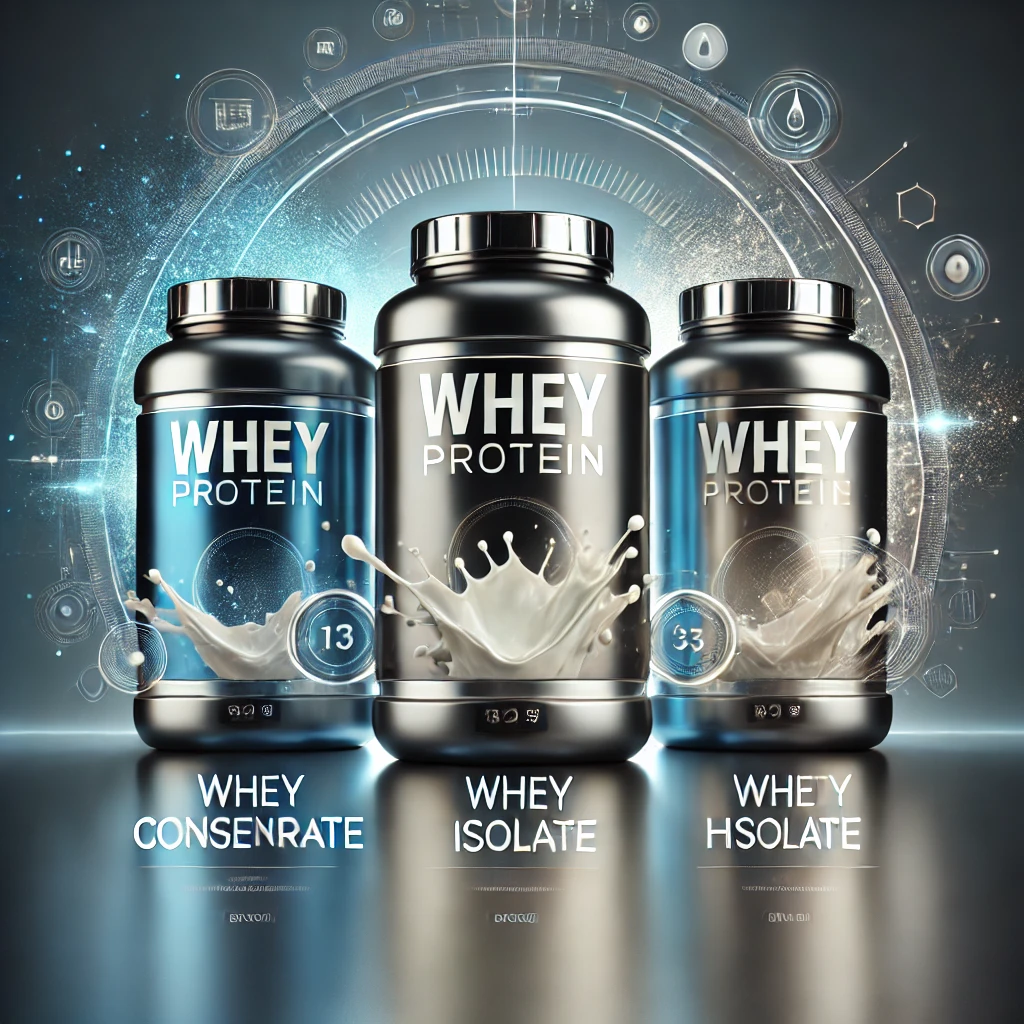
When you’re shopping for whey protein, the big question is: Does it contain lactose?
Whether you have lactose intolerance or are just concerned about digestive issues, understanding the differences in lactose content between types of whey protein is crucial. Let’s break it down and see how each type stacks up for your needs.
Product Comparison Table:
| Product Type | Lactose Content | Protein Content | Best For |
|---|---|---|---|
| Whey Protein Concentrate | High (4-6g per serving) | 70-80% | Budget options, non-lactose sensitive users |
| Whey Protein Isolate | Low (<1g per serving) | 90%+ | Lactose-sensitive users |
| Hydrolyzed Whey Protein | Very Low | 90%+ | Sensitive stomachs, fast absorption needs |
1. Whey Protein Concentrate (WPC)
- Lactose Content: High, typically 4-6 grams per serving.
- Protein Content: 70-80% protein by weight.
- Ideal For: If you’re looking for a budget-friendly option and aren’t lactose-sensitive, WPC might be a good fit.
- Example: If you’re not bothered by lactose, WPC offers more nutrition at a lower price. However, if you have lactose intolerance, you may experience bloating or discomfort.
2. Whey Protein Isolate (WPI)
- Lactose Content: Low, typically less than 1 gram per serving.
- Protein Content: 90%+ protein by weight.
- Ideal For: Lactose-sensitive users who still want the benefits of whey protein.
- Example: WPI is great for those who are lactose intolerant or are looking to minimize fat intake without sacrificing protein quality. You won’t experience the stomach discomfort common with WPC.
3. Hydrolyzed Whey Protein (WPH)
- Lactose Content: Very low, but trace amounts may still remain.
- Protein Content: 90%+ protein by weight.
- Ideal For: Sensitive stomachs or those who need faster protein absorption post-workout.
- Example: Hydrolyzed whey is processed to break down the protein into smaller peptides. This makes it easier on your stomach, especially if you have sensitive digestion or are recovering from intense workouts.
Which One Should You Choose?
- If you’re not lactose intolerant: Whey Protein Concentrate (WPC) gives you a great balance of protein and value.
- If you’re lactose intolerant: Go for Whey Protein Isolate (WPI), which has minimal lactose.
- If you have a sensitive stomach or want fast absorption: Hydrolyzed Whey Protein (WPH) is the best option, providing the most digestible protein with minimal lactose.
Can People with Lactose Intolerance Use Whey Protein?
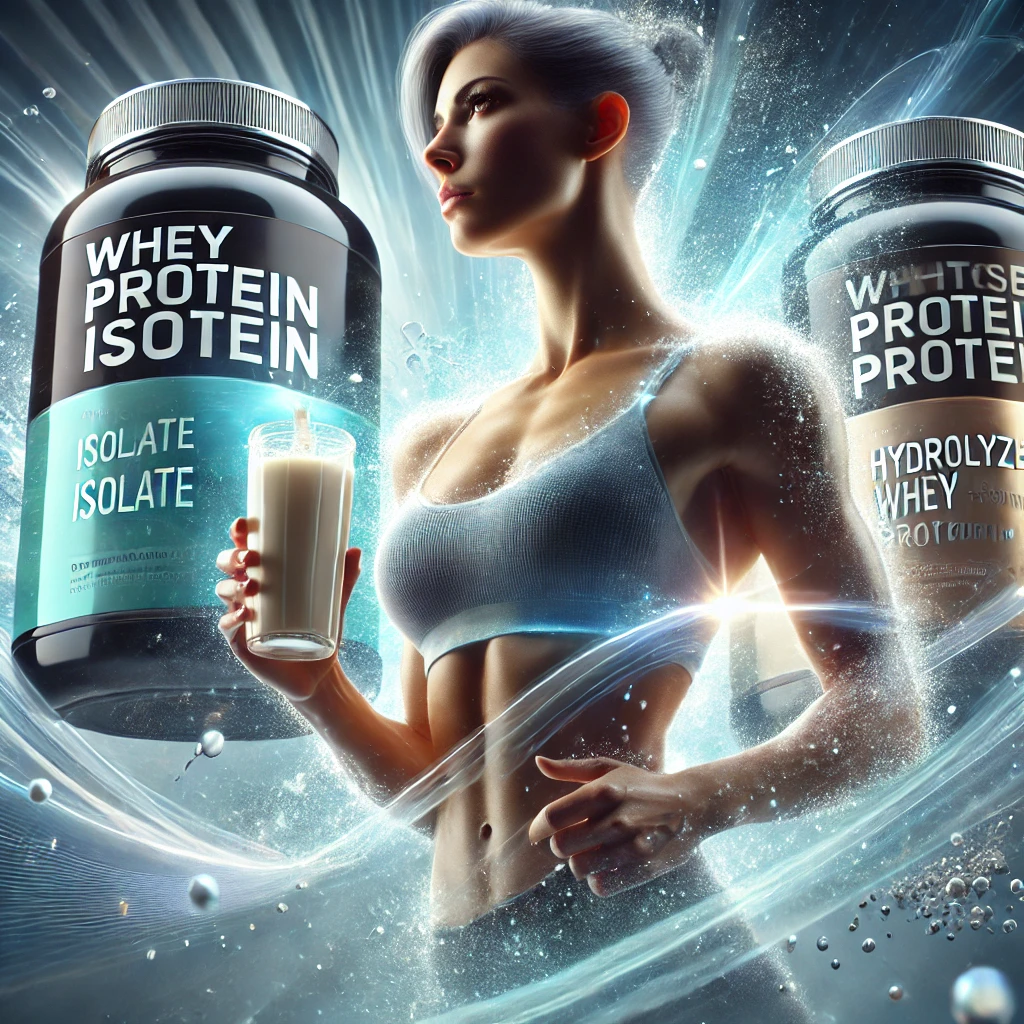 Many people with lactose intolerance think they must avoid whey protein altogether. However, the truth is, you can still enjoy the benefits of whey protein if you choose the right type. Whey protein isolate and hydrolyzed whey protein contain very little lactose, making them suitable options for most individuals with lactose sensitivity.
Many people with lactose intolerance think they must avoid whey protein altogether. However, the truth is, you can still enjoy the benefits of whey protein if you choose the right type. Whey protein isolate and hydrolyzed whey protein contain very little lactose, making them suitable options for most individuals with lactose sensitivity.
Lactose Intolerance and Whey Protein
- Whey Protein Isolate (WPI): This form is processed to remove most of the lactose. It contains less than 1 gram of lactose per serving, which is typically well-tolerated by people with lactose intolerance.
- Hydrolyzed Whey Protein (WPH): This is further broken down into smaller protein fragments, which can aid digestion and absorption. It contains even less lactose and may be easier for sensitive individuals to digest.
Both of these options are great for those looking to avoid the discomfort associated with lactose intolerance, such as bloating or cramps.
Real Quote:
One Reddit user shared their experience:
“I switched to whey protein isolate and haven’t had issues since. It’s a game-changer.” This highlights how many people with lactose intolerance successfully manage their symptoms by choosing the right type of whey protein.
Guide for Testing Tolerance
If you’re not sure how your body will react to whey protein, here are a few simple steps to test your tolerance:
- Start Small: Begin with a half-scoop of whey protein isolate. This will allow you to gauge your body’s reaction without overwhelming your system.
- Observe Symptoms: After consuming the protein, pay attention to any symptoms like bloating, gas, or cramping. If you feel fine, you can gradually increase the amount.
- Opt for Hydrolyzed Whey Protein: If you experience discomfort with isolate, try hydrolyzed whey protein. It’s broken down into smaller peptides and may cause fewer digestive issues.
Alternative Protein Options for Lactose-Sensitive Individuals
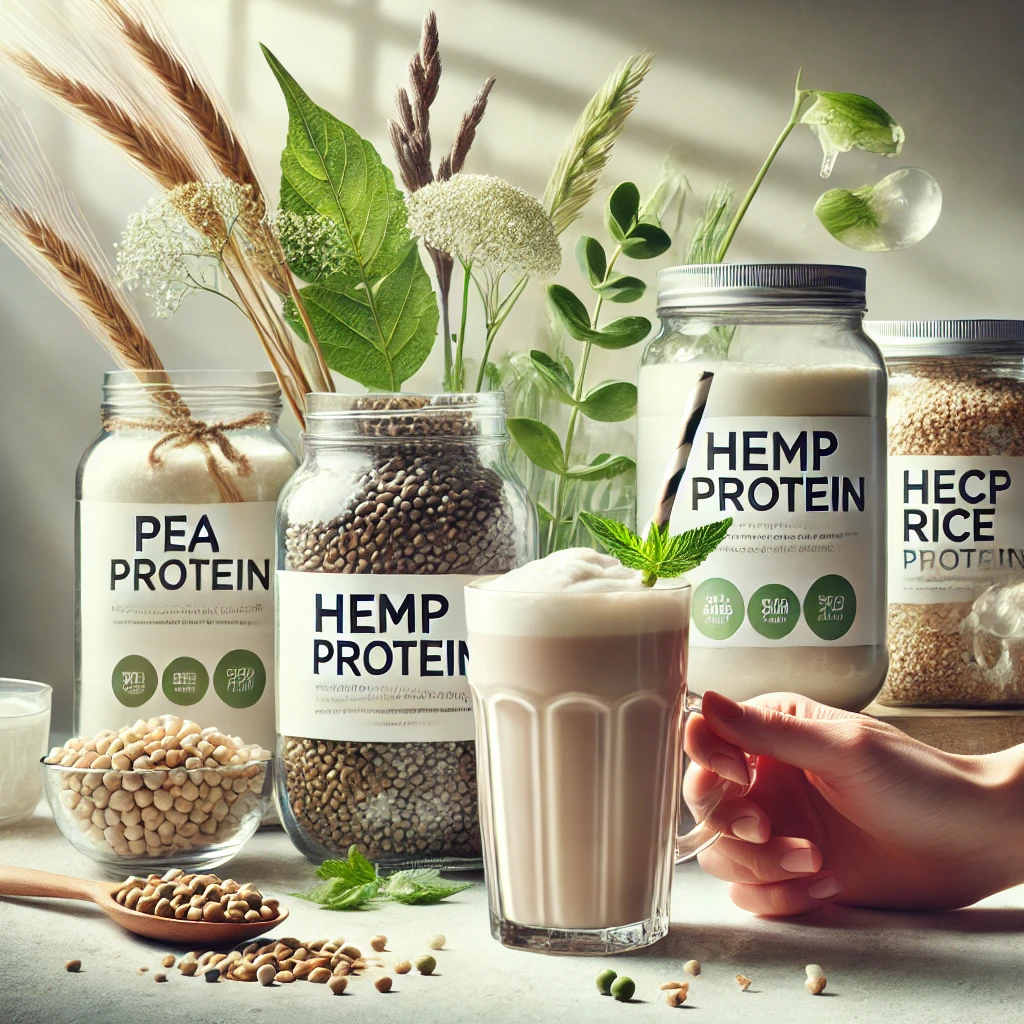
If you have lactose intolerance, you don’t have to miss out on the benefits of protein. There are plenty of lactose-free and plant-based protein alternatives that can fuel your body without causing discomfort. Here are some options that can work for you.
1. Plant-Based Proteins
Pea Protein:
- What it is: Derived from yellow peas, pea protein is an excellent plant-based option.
- Why it works: It’s hypoallergenic, meaning it’s easy to digest and free from dairy.
- Benefit: High in protein, fibre, and iron, making it a great option for muscle repair.
- Example: If you’re switching from whey protein, pea protein is a great choice for keeping up with your fitness goals.
Rice Protein:
- What it is: Made from brown rice, rice protein is another solid alternative.
- Why it works: It’s gluten-free and doesn’t cause bloating or discomfort for most people.
- Benefit: Provides a good amount of protein, though it’s lower in certain amino acids compared to whey.
- Example: If you’re trying to avoid dairy, rice protein can be a gentler option for your gut.
Hemp Protein:
- What it is: Extracted from hemp seeds, this protein contains all nine essential amino acids.
- Why it works: It’s plant-based, full of healthy fats, and high in fiber.
- Benefit: Hemp protein is great for promoting heart health and reducing inflammation.
- Example: Hemp protein is ideal if you’re looking for a natural, well-rounded protein source.
Why Plant-Based Proteins Work for Lactose-Sensitive Individuals:
- These proteins are naturally free of lactose, so you won’t experience the digestive issues that can occur with whey protein.
- They offer a variety of essential amino acids needed for muscle growth and recovery.
2. Lactose-Free Whey Protein
If you prefer sticking with whey but want to avoid the lactose, look for lactose-free whey protein.
- What it is: This is whey protein that has been processed to remove almost all lactose, leaving you with pure protein.
- Benefit: You still get the high-quality protein found in whey, without the stomach issues.
- Example: Some brands offer whey protein isolates that are virtually lactose-free, making them easier to digest for those with lactose sensitivity.
User Insight
“I switched to plant-based protein and felt much lighter. No bloating like with whey.”
– Shared by a Quora user. This is a common experience for many people who choose plant-based proteins over whey, especially if they’re dealing with lactose intolerance.
How to Minimize Lactose Intake When Using Whey Protein
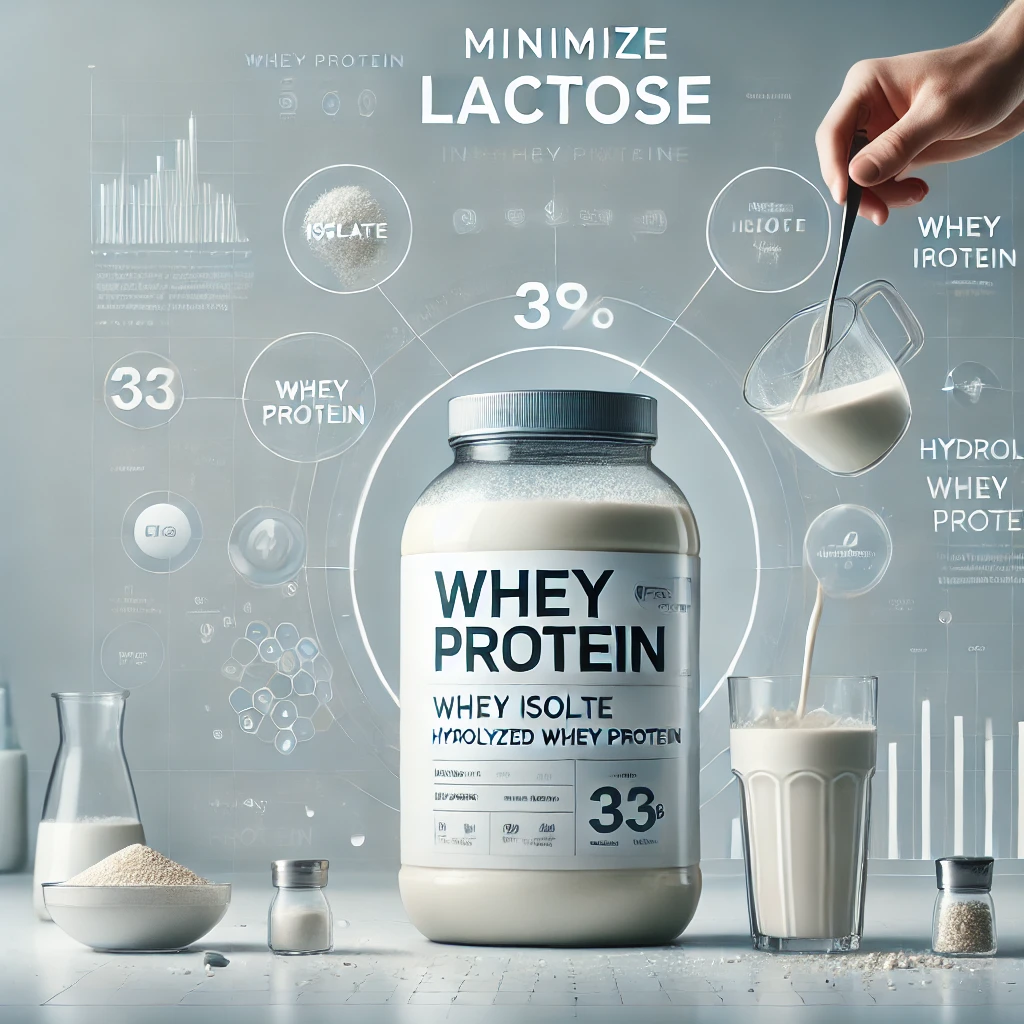
If you love whey protein but struggle with lactose intolerance, don’t worry! You can still enjoy whey protein without the discomfort. Here are some simple steps to reduce your lactose intake while getting the protein you need.
1. Choose Whey Protein Isolate (WPI)
- Why it works: Whey protein isolate is processed to remove most of the lactose. It contains less than 1 gram of lactose per serving, making it much easier to digest.
- Example: If you’re lactose-sensitive, switch to whey isolate to avoid bloating and gas that often come with whey concentrate.
- Benefit: You get the full muscle-building benefits of whey protein without the digestive issues.
2. Opt for Hydrolyzed Whey Protein
- Why it works: Hydrolyzed whey is further processed to break down the protein into smaller pieces, making it even easier to digest. This also reduces the amount of lactose.
- Example: If you have a very sensitive stomach, hydrolyzed whey protein is the best choice to reduce discomfort.
- Benefit: It’s easier on the digestive system, even for those with lactose intolerance.
3. Use Lactase Supplements
- Why it works: Lactase is the enzyme that breaks down lactose in your body. If you prefer whey concentrate, you can take a lactase enzyme supplement before your protein shake.
- Example: Taking lactase pills can help your body process the lactose, allowing you to enjoy regular whey protein concentrate without discomfort.
- Benefit: You can still enjoy the benefits of whey concentrate without having to worry about bloating or cramps.
4. Read Labels for Lactose Content
- Why it works: Not all whey protein products are created equal. Always check the label for the lactose content. Many companies label their products as “lactose-free” or “low-lactose.”
- Example: Look for whey protein isolate or any products specifically labeled as “lactose-free.” This can help you avoid unwanted symptoms.
- Benefit: Knowing the lactose content lets you choose the right product for your digestive health.
Breakdown of Whey Protein
What’s Inside Your Scoop of Whey Protein?
Whey protein is a popular supplement for muscle building and recovery. But what’s actually in that scoop you’re using? Let’s break down the nutrition.
1. How Much Protein in 1 Scoop of Whey Protein?
- Protein Content: Typically, one scoop of whey protein contains 20-30 grams of protein.
- Example: If you’re aiming to hit 100 grams of protein daily, you’ll need around 4 scoops of whey protein, depending on the brand.
- Benefit: This amount of protein is perfect for supporting muscle growth and recovery after workouts.
2. How Many Calories in Protein Powder?
- Caloric Content: A standard scoop of whey protein contains between 100-150 calories, depending on the type (isolate vs. concentrate).
- Whey Protein Isolate: Typically lower in calories, as it’s more pure protein.
- Whey Protein Concentrate: Usually has more fat and carbs, so it may have slightly more calories.
- Example: If you’re looking to cut calories, whey protein isolate is the way to go since it offers more protein per scoop with fewer calories.
3. How Much is One Scoop of Protein Powder?
- Standard Serving Size: One scoop is generally 25-30 grams of powder.
- Example: This standard size is typically what’s used in most recipes or shakes.
- Benefit: It’s an easy measurement that helps you track how much protein you’re getting.
Quick Fact:
On average, one scoop of whey protein contains 24 grams of protein and 120 calories. This is the perfect amount for a post-workout shake, or as a snack throughout the day.
Common Myths About Whey Protein
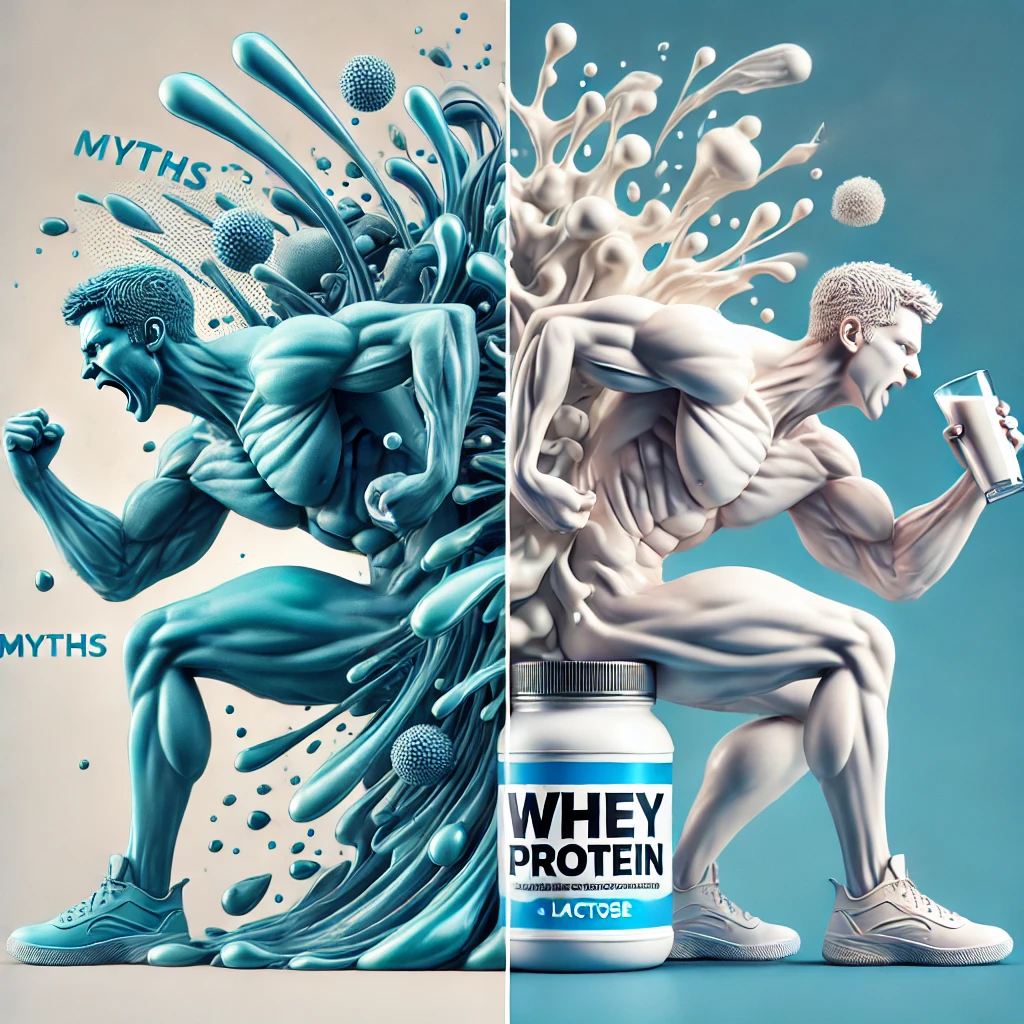 When it comes to whey protein and lactose, there are a lot of myths. Let’s clear up the confusion and help you make an informed choice about your protein intake.
When it comes to whey protein and lactose, there are a lot of myths. Let’s clear up the confusion and help you make an informed choice about your protein intake.
Myth 1: Whey Protein Always Contains Lactose
- The Truth: It’s a common belief that all whey protein contains lactose.
- What You Need to Know: Whey Protein Isolate (WPI) has very little lactose. It’s processed to remove most of the lactose, making it much easier to digest for people with lactose intolerance.
- Example: If you’ve tried regular whey protein and felt bloated or uncomfortable, switching to whey protein isolate may solve that problem. It’s low in lactose (usually less than 1 gram per scoop).
Myth 2: Whey Protein Isolate is Completely Lactose-Free
- The Truth: While whey protein isolate is very low in lactose, it’s not entirely free of it.
- What You Need to Know: WPI undergoes processing to reduce lactose, but some trace amounts can still be present. It’s an ideal choice for most people with lactose intolerance, but it’s not a 100% guarantee that it’s completely free of lactose.
- Example: If you are highly sensitive to lactose, you may experience slight discomfort with WPI. In this case, hydrolyzed whey protein might be a better option since it’s even more processed and contains fewer traces of lactose.
Myth 3: All People with Lactose Intolerance Can’t Consume Whey Protein
- The Truth: Most people with lactose intolerance can safely consume whey protein isolate or hydrolyzed whey protein, which contain very low amounts of lactose.
- What You Need to Know: Just because you’re lactose intolerant doesn’t mean you have to avoid whey protein altogether. In fact, many people with lactose intolerance can handle whey protein isolate with no issues.
- Example: A Reddit user shared, “I thought I couldn’t have whey protein, but isolate works fine for me.” This is a common experience for many people who have switched to isolates or hydrolyzed whey.
When and How to Take Whey Protein
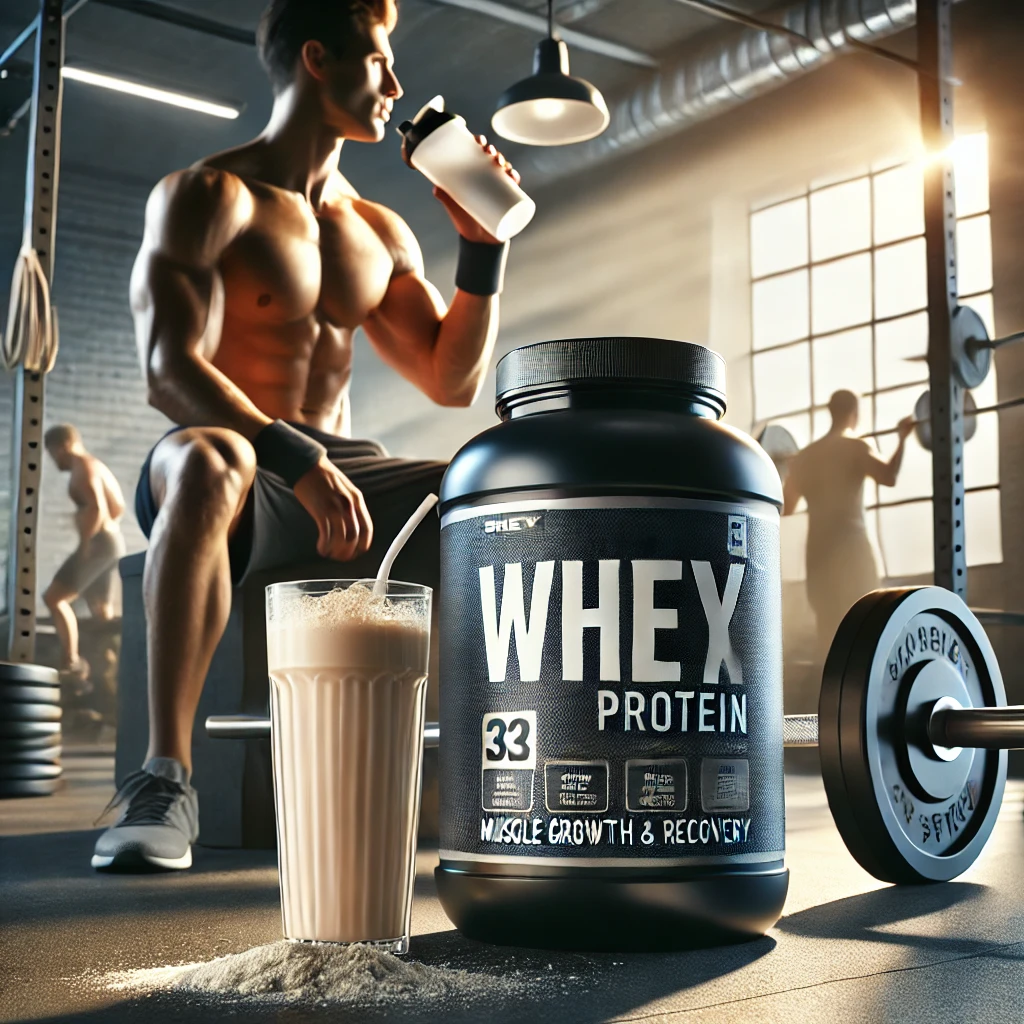
Maximizing the Benefits of Whey Protein
Whey protein is a powerful tool for muscle growth and recovery, but timing is everything. To get the most out of your whey protein, you need to know the right times to take it.
When to Take Whey Protein
Post-Workout:
- Why: After a workout, your muscles need protein to repair and grow. Whey protein is absorbed quickly, helping to kickstart recovery and prevent muscle breakdown.
- Example: A scoop of whey protein immediately after your workout gives your muscles the nutrients they need to recover faster.
- Benefit: It promotes muscle recovery, reduces soreness, and aids in faster muscle growth.
In the Morning:
- Why: After a night of fasting, your body is in need of protein to kickstart metabolism and muscle repair. Taking whey protein first thing in the morning can help you feel energized throughout the day.
- Example: A protein shake in the morning with some fruit or oats is a quick, balanced breakfast.
- Benefit: It provides your body with the essential amino acids it needs after a long fast (sleep).
Between Meals:
- Why: If you’re trying to hit your protein goals for the day, a whey protein shake between meals can help you get there. It keeps your body in an anabolic state (muscle-building) and helps keep hunger at bay.
- Example: If you’re having trouble getting enough protein, a whey shake mid-morning or mid-afternoon can fill the gap.
User Insight
One Reddit user shared: “Taking protein right after my workout helped my recovery so much. I feel stronger the next day.”
This is a common experience. Protein after your workout helps your muscles recover and grow, reducing soreness.
Does Whey Protein Expire?
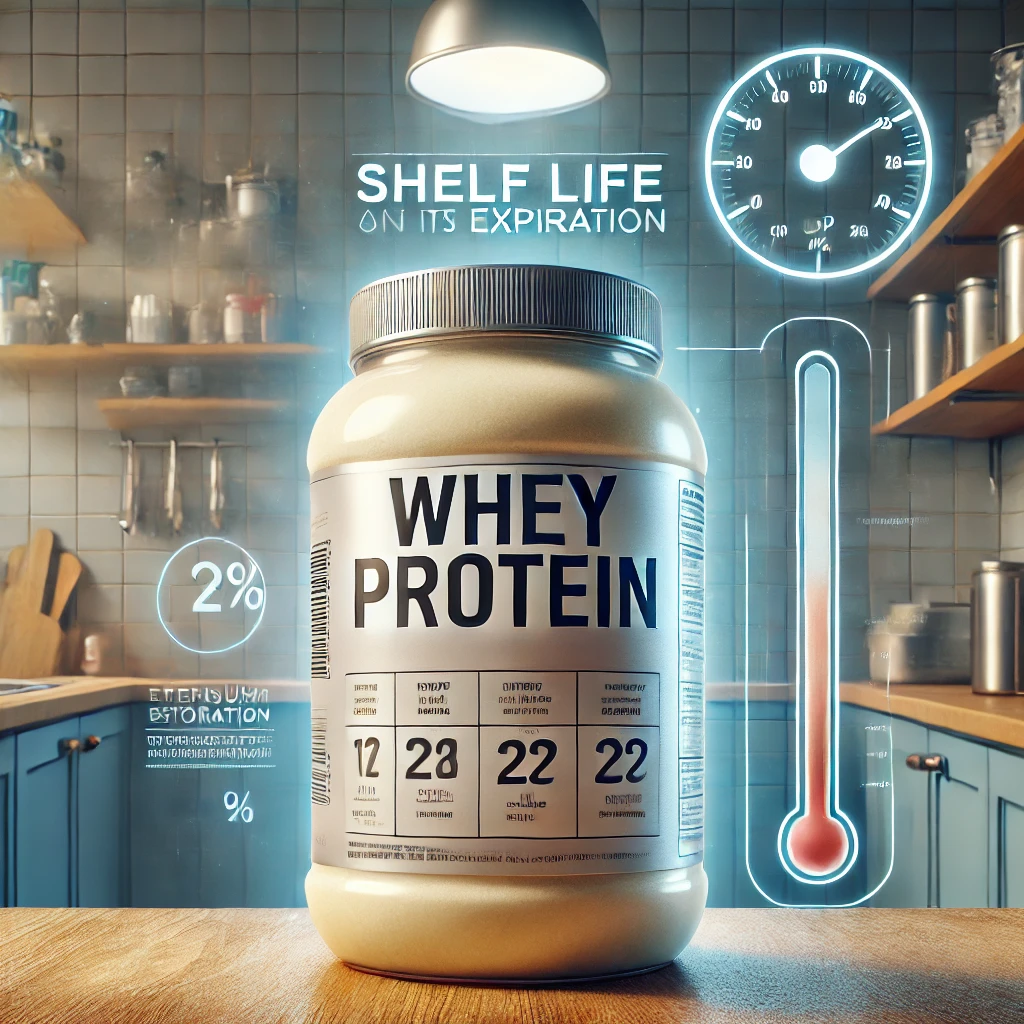
Whey protein is a powerful supplement for muscle recovery and growth, but like any product, it doesn’t last forever. Knowing how to store it properly and understanding its shelf life will help you get the most out of your protein.
Shelf Life of Whey Protein
Unopened Whey Protein:
- Whey protein typically lasts 1-2 years if it’s unopened and stored correctly.
- Storage Tip: Store your protein in a cool, dry place, away from direct sunlight and moisture. A pantry or cupboard works great.
- Why: Heat, light, and moisture can break down the protein, causing it to lose its effectiveness or even spoil.
Opened Whey Protein:
- Once opened, the protein powder’s shelf life shortens. It’s still good for about 6 months to a year, as long as you store it properly.
- Storage Tip: Always keep the lid tightly closed, and if possible, store the container in a zip-lock bag or airtight container to keep it fresh.
Quick Fact
Whey protein typically lasts 1-2 years if unopened and stored in a cool, dry place. This means that if you’ve kept your protein in a safe spot, it should remain fresh and potent for a long time.
User Insight
One Quora user shared:
“I didn’t realize my protein powder expired until I noticed a strange smell. Now I check the date regularly.” This is a common mistake. Often, protein doesn’t go bad immediately, but the quality decreases over time.
How to Know If Your Whey Protein is Still Good
- Check the Expiration Date: Always look for the printed expiration date on the packaging.
- Smell Test: If your protein powder has a sour or off smell, it’s likely gone bad.
- Clumping: Protein powder that has clumped together can indicate moisture exposure, meaning it’s time to toss it.
- Taste: If it tastes odd or different than usual, don’t consume it.
Product Comparison Table: Top Whey Protein Products
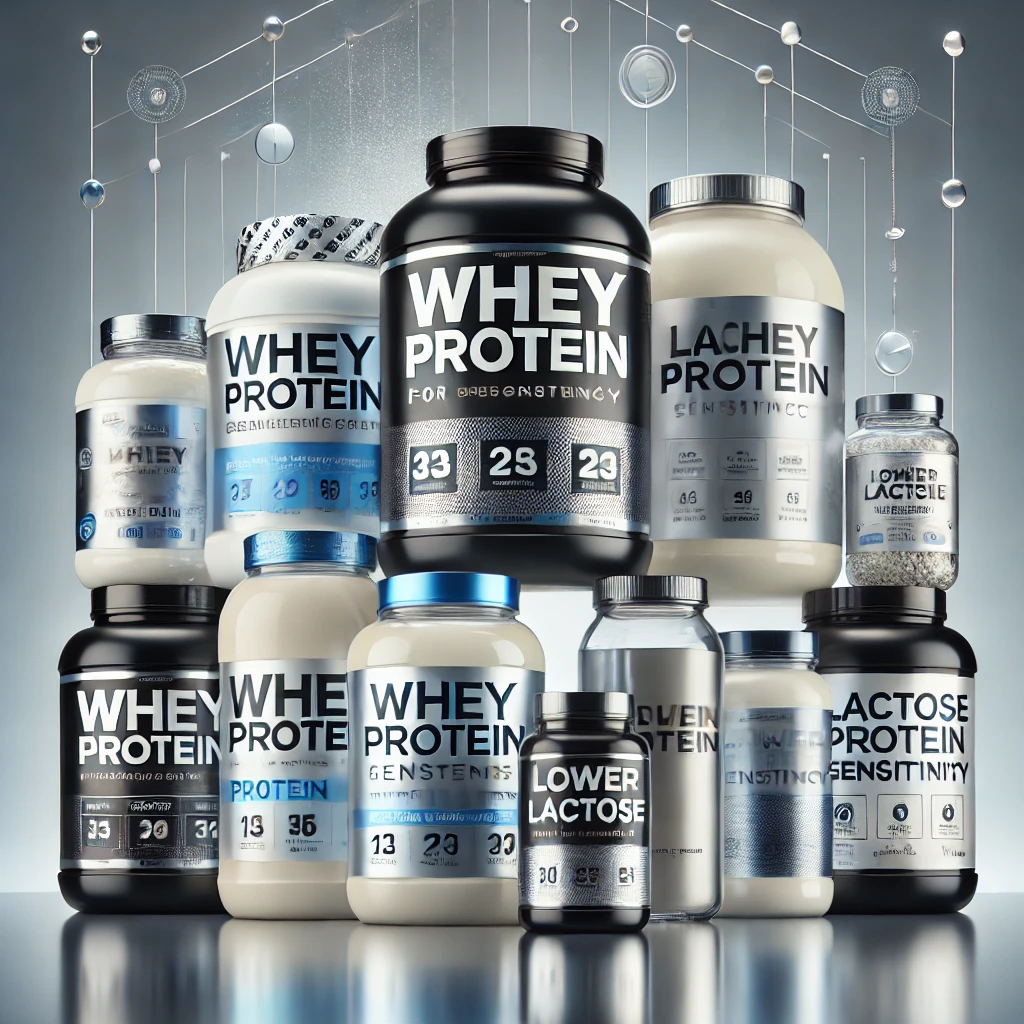
Comparing Popular Whey Protein Brands for Lactose Sensitivity
If you have lactose intolerance, finding the right whey protein can be tricky. Below is a comparison of some of the top whey protein brands, highlighting key factors like protein content, lactose content, price, and customer feedback. This will help you make an informed decision on which brand best suits your needs.
Product Comparison Table: Top Whey Protein Products
| Brand | Protein Content | Lactose Content | Price Range | Best For |
|---|---|---|---|---|
| Transparent Labs | 25g per scoop | Very Low | $40-$60 | Lactose-sensitive users |
| Optimum Nutrition | 24g per scoop | Moderate | $30-$50 | Budget-friendly |
| Dymatize Nutrition | 25g per scoop | Low | $30-$55 | Muscle building |
| Vital Proteins | 20g per scoop | Very Low | $40-$60 | Joint health and recovery |
| Bulk Natural Foods | 25g per scoop | Low | $25-$45 | Clean, natural ingredients |
Explanation of Key Factors:
Protein Content: Most whey proteins provide around 24-25g of protein per scoop. This is ideal for muscle growth and recovery after workouts.
Lactose Content:
- Transparent Labs and Vital Proteins are best for those who are highly sensitive to lactose, as their lactose content is very low.
- Optimum Nutrition and Dymatize Nutrition are moderate to low in lactose, making them suitable for people with mild lactose intolerance.
Price Range:
- Transparent Labs and Vital Proteins tend to be on the higher end of the price spectrum, but they offer very clean ingredients.
- Optimum Nutrition and Dymatize Nutrition are more budget-friendly options while still offering high-quality protein.
Best For:
- If you’re lactose-sensitive, Transparent Labs and Vital Proteins are ideal.
For those building muscle or looking for a more budget-friendly option, Dymatize Nutrition and Optimum Nutrition are excellent choices.
FAQs
1. Does Whey Protein Contain Lactose?
Answer: Yes, whey protein contains varying amounts of lactose depending on its type. Whey protein concentrate has higher lactose content, while whey protein isolate has significantly less. Some products, like Clear Naked Whey, are formulated to be 100% lactose-free.
2. Can People with Lactose Intolerance Use Whey Protein?
Answer: Many individuals with lactose intolerance can tolerate whey protein isolate, which contains very low levels of lactose. However, it’s essential to monitor personal tolerance levels and consult with a healthcare provider if necessary.
3. What Are the Symptoms of Lactose Intolerance from Whey Protein?
Answer: Symptoms may include bloating, gas, diarrhea, and stomach cramps. These typically occur within 30 minutes to 2 hours after consuming whey protein, especially if it’s a concentrate.
4. How Much Lactose Is in Whey Protein Isolate?
Answer: Whey protein isolate typically contains less than 1 gram of lactose per serving, making it a suitable option for many lactose-intolerant individuals.
5. Is There a Completely Lactose-Free Whey Protein?
Answer: Yes, some brands offer lactose-free whey protein options. For instance, SimplyTeras provides lactose-free organic whey by adding a natural enzyme to break down the lactose.


1 thought on “Does Whey Protein Have Lactose?”